Another rousing talk with a true socialist, Dan Kovalik, from Pittsburgh, here, pre-airing on my Radio Show, Finding Fringe on kyaq.org. Here’s today’s (July 1) link to the show which will air Sept. 10 —LISTEN: Dan Kovalik and Paul Haeder talking about Syria, regime change, all those spooks and kooks.
Surprisingly, it all comes down to Oscar Romero for Dan who voted for or supported Ronald Ray-Gun the first terrorist go-around:
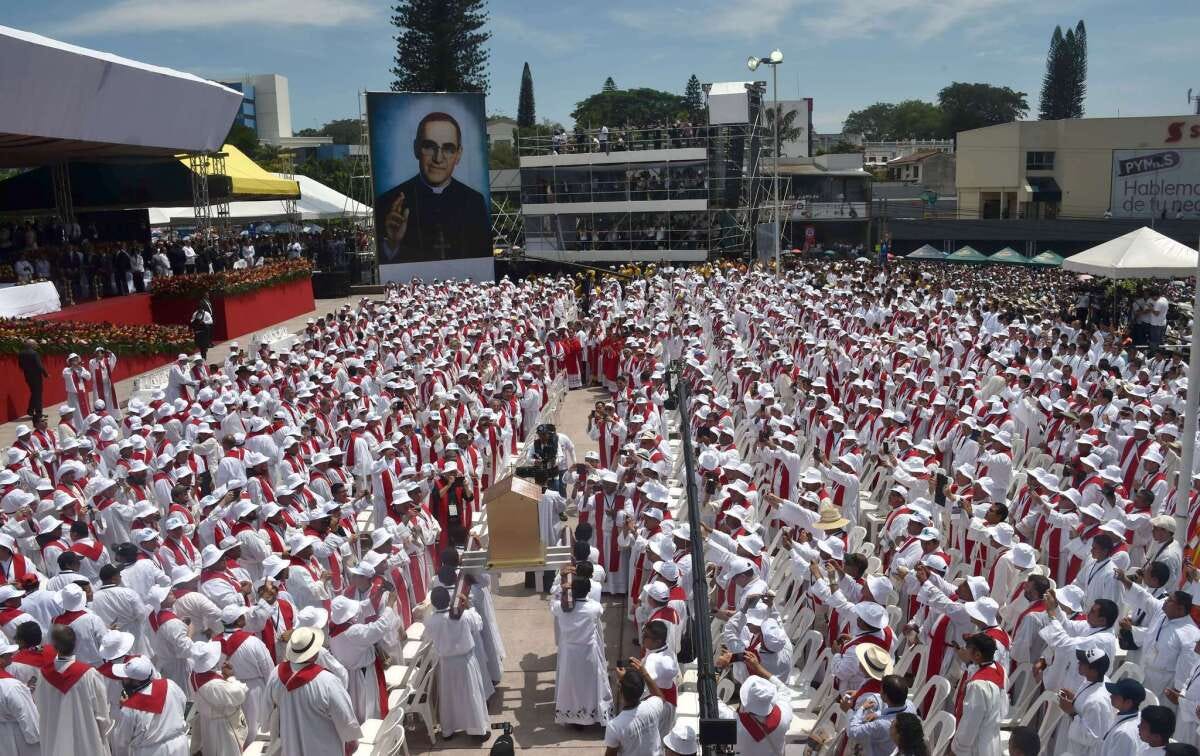
Coming of age, he stated, at age 19 when he traveled to Nicaragua, and he’s been on that socialist and communist path since, now at age 57 with kiddos living the life in Pittsburgh.
He’s written books that will get anyone in trouble if they showed up at a mixed company event , or No Kings rally staffing a table with his books piled up high.
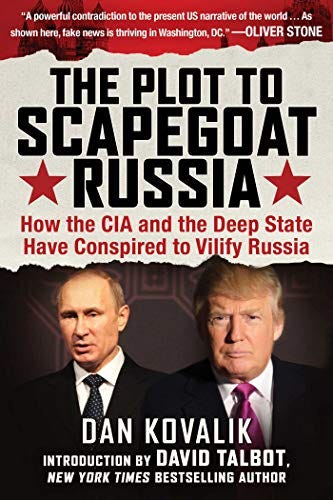



We talked about the Syria book, for sure, but then the case of regime change, well, Vietnam, anyone? El Salvador, folks?


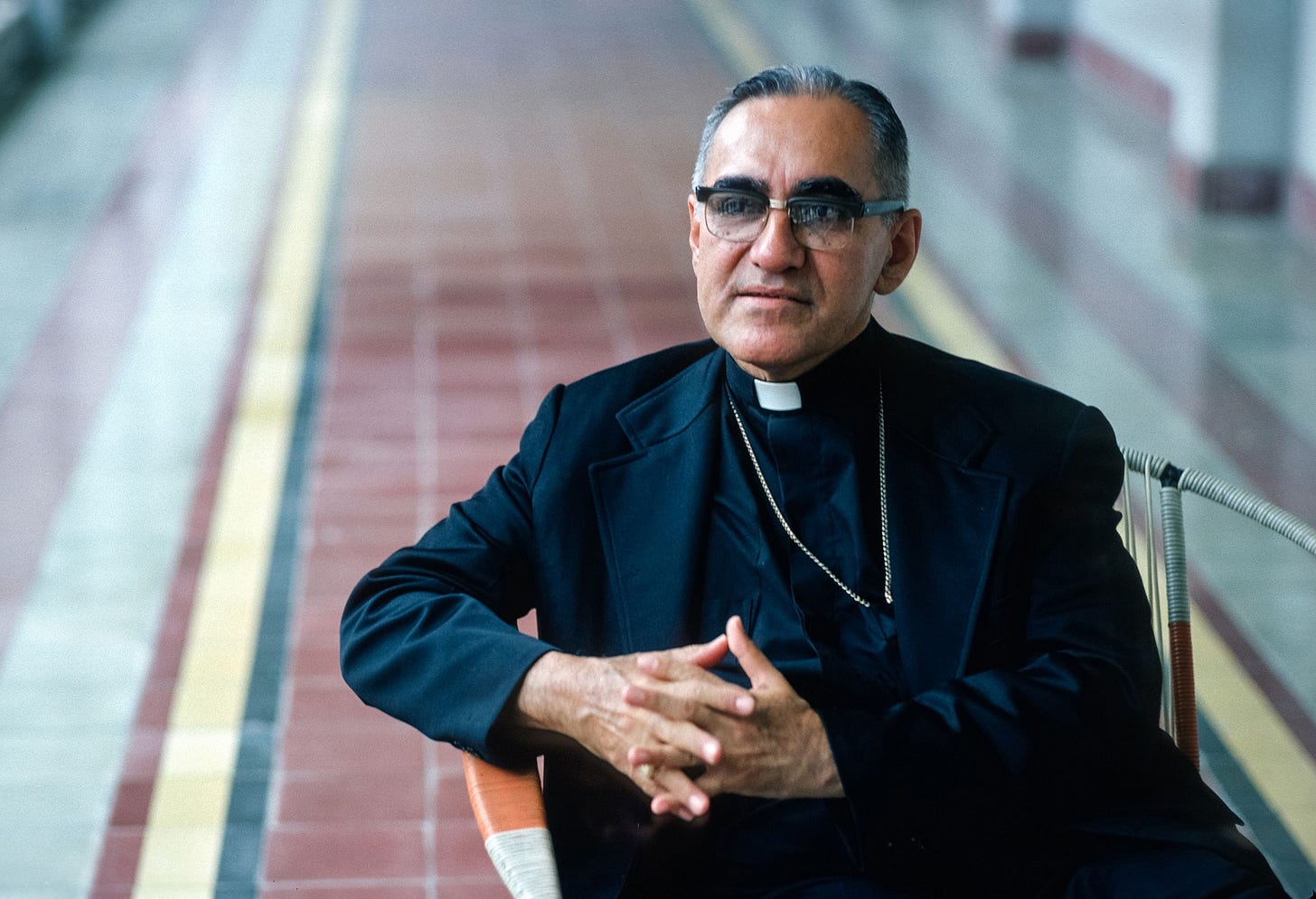
Reagan’s legacy: President Ronald Reagan in 1982; Archbishop Oscar Romero, assassinated in March 1980, and the four American Catholic missionaries murdered in the same year by the Salvadoran National Guard: Maura Clarke, Jean Donovan, Ita Ford, and Dorothy Kazel. (Reagan: Michael Evans / The White House / Getty Images; Romero: Bettmann; bottom: courtesy of the Maryknoll Sisters.)
Dan told me he has a lifesized statue of Saint Oscar Romero in his house, and the Catholic kid from Pittsburgh transformed into a Columbia University graduate of law and running into the Belly of the Beast of one of Many Proxy Chaos countries of the Monroe Doctrine variety — Colombia.
I’m 11 years older than Dan, and so my baseline is much different, for sure, and this prick, man, this prick was always a prick to me: Carter’s administration rejected Saint Óscar Romero’s pleas not to provide military aid to the Salvadoran junta before he was assassinated.

From the CIA pages of Wikipedia: He/Kovalik worked on the Alien Tort Claims Act cases against The Coca-Cola Company, Drummond Company and Occidental Petroleum over human rights abuses in Colombia.[3] Kovalik accused the United States of intervention in Colombia, saying it has threatened peaceful actors there so it may “make Colombian land secure for massive appropriation and exploitation”.[6] He also accused the Colombian and United States governments of overseeing mass killings in Colombia between 2002 and 2009.[7]

Oh, remember those days, no, when I was young teaching college at age 25: Oh yeah, BDS CocaCola? Right brothers, right sisters:

“If we lose this fight against Coke,
First we will lose our union,
Next we will lose our jobs,
And then we will all lose our lives!”“If it weren’t for international solidarity,
We would have been eliminated long ago. That is the truth.”— Sinaltrainal VP Juan Carlos Galvis

Note: More Stream of Consciousness on my part: Sickly Sweet: The Sugar Cane Industry and Kidney Disease/ Ariadne Ellsworth | June 7, 2014

We are the world’s supreme terrorists, Dan and I agree. And, while we have BDS for Israel, think about it = BDS for UnUnited Snake$ of AmeriKKKa? How’s that Coke doing for you? Boycotting Walmart, Starbucks, Exxon, BP, Coke, etc. Ain’t going to have a revolution boycotting plastic bottles of water.



Almost Thirty Years ago, this book, School of Assassins, was published: The atrocities perpetrated on hundreds of thousands of Latin Americans by graduates of the US Army’s School of the Americas will not come as a surprise to many. For the uninitiated, however, this book is sure to be an eye-opener. How many of us remember, every time we read of plunder, torture, and murder by corrupt military regimes in Central and South America, that almost all of them employ officers trained in these “arts” at Fort Benning’s SOA, and that their clandestine education is funded by our tax dollars? In School of Assassins — vital reading for anyone who still harbors delusions about America’s role abroad — the author records the history of the school and its graduates. More important, he shows how the school’s very existence is a hidden consequence of the imperialistic foreign policy shamelessly pursued by our government for decades, all with the express purpose of maintaining world dominance. Nelson-Pallmeyer offers ideas for ways to work toward closing the school, but he suggests that the true task ahead of us is continual, active opposition to the death-bringing hunger for power and control — not only in the public arena, but in our personal lives.

Table of Contents
Foreword by Oliver Stone
Introduction
Chapter 1: The First U.S. Regime Change in Syria—The Early Cold War
Chapter 2: Back to the Future: Long-Term U.S. Regime-Change Strategy
Chapter 3: The Arab Spring and U.S. Interference in Syria
Chapter 4: Voices from Syria
Chapter 5: Charlie Wilson’s War Redux? Operation Timber Sycamore and Other Covert Operations in Syria
Chapter 6: Strange Bedfellows: The Multi-National Alliance Against Syria
Chapter 7: Shades of the Gulf of Tonkin: Chemical Weapons False Flag
Chapter 8: A War by Other Means: Sanctions and the U.S. Regime-Change Operation
Chapter 9: The White Helmets: Al Qaeda’s Partner in Crime
Chapter 10: The Liberal Intelligentsia Plays Its Role
Chapter 11: Syria After the Western-backed Al Qaeda Triumph—As Witnessed by Dan Kovalik
Epilogue
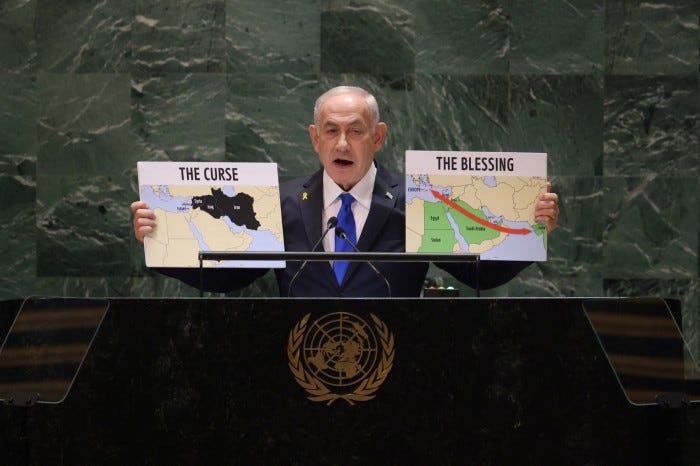
Here’s the first paragraphs of Oliver Stone’s forward:
Foreword by Oliver Stone
Another nation has fallen to the predations of Western interventionism. This time, it is Syria, a once beautiful and prosperous country, which has been home to peoples of different religions and ethnicities who lived together peacefully for centuries. That peaceful coexistence was purposefully destroyed by the U.S. and its allies who decided to effectuate regime change by inciting sectarian violence and supporting terrorist groups whose explicit plan was to set up an extremist religious Caliphate intolerant of all other religions.
Quite tragically, the terrorist group Al Qaeda, now named HTS, has taken over Syria and is now in the process of setting up such a Caliphate. Part of this process entails the mass slaughter of religious minorities, such as Alawites and Christians, and the kidnapping of young women from these groups who are raped and enslaved.
It would be shocking to know that this is all happening with the full connivance of modern, Western nations, except for the fact that we have seen this all before—most notably, in Afghanistan where the U.S. supported religious extremists to overthrow a secular, socialist government and to lure the USSR into the “Afghan trap,” in the words of Zbigniew Brzezinski. Years later, the Soviet Union is gone, Afghanistan is now being ruled by the Taliban, and the offspring of the terrorist groups the U.S. supported in Afghanistan—namely, Osama bin Laden’s Al Qaeda—is now flourishing more than ever as the ruling group of a major country.


Oil oil oil, and anti-USSR and anti-socialist fervor, man: Here, those 9 steps toward regime change deployed in Syria — bloody sanctions kill more than physical bombs.

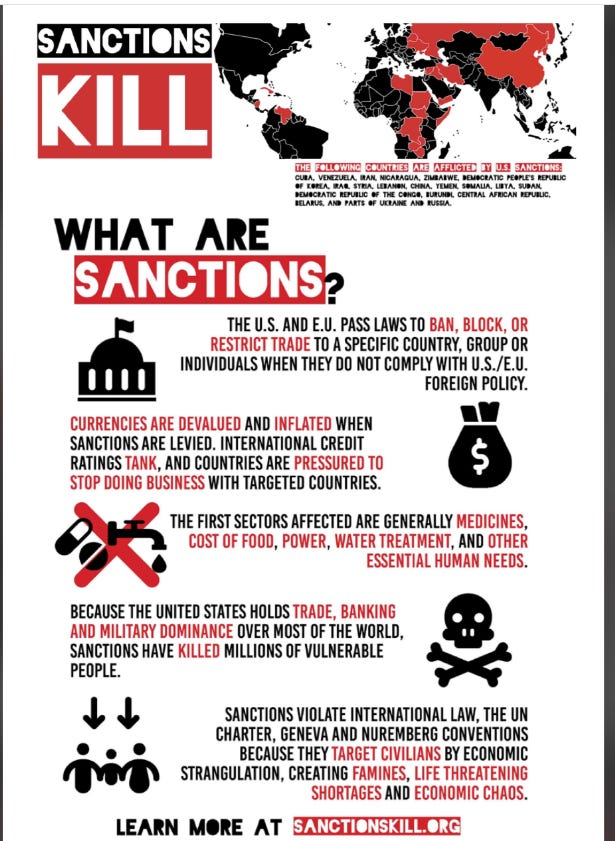
From Dan and Jeremy’s first chapter:
Direct Quoting: The U.S. State Department actually took credit for Assad’s overthrow. Spokesman Matthew Miller stated on December 9, 2024 that U.S. policy had “led to the situation we’re in today.” It “developed during the latter stages of the Obama administration” and “has largely carried through to this day.”[1] The regime-change operation in Syria was openly advertised even earlier, when General Wesley Clark was told during a visit at the Pentagon after 9/11 that “we’re going to attack and destroy the governments in seven countries in five years—we’re going to start with Iraq, and then we’re going to move to Syria, Lebanon, Libya, Somalia, Sudan and Iran.”[2]
The methods that were utilized to oust Assad fit a long-standing regime-change playbook that had been applied in many of the countries listed by Clark. This playbook involves:
a) a protracted demonization campaign that spotlights the dastardly human rights abuses allegedly committed by the target of U.S. regime change. This demonization campaign enlists journalists and academics and highlights the viewpoint of pro-Western dissidents while maligning politicians, journalists or academics who voice criticism of U.S. foreign policy or who are against the regime-change operation (the latter being derided as “dictator lovers” or “apologists”).[3]
b) National Endowment for Democracy (NED) and United States Agency of international Development (USAID) funding of civil society and opposition groups and opposition media with the aim of mobilizing support of students and young people against the government.
c) a program of economic warfare designed to weaken the economy and facilitate hardship for the population that will push them to turn against their leader.
d) CIA financing of rebel groups and fomenting of protests or an uprising that aims to elicit a heavy-handed government response that can be used to further turn domestic and world opinion against the government.
e) a false flag is often necessary in which paid snipers dressed up in army or police uniforms fire on protesters. Blame is cast on the targeted government when it urges restraint. Chemical or biological warfare attacks are also staged in order to rally Western opinion in support of “humanitarian” military intervention.
f) drone warfare, bombing, and clandestine Special Forces operations using Navy Seals and private mercenaries. The light U.S. footprint approach will avert antiwar dissent at home.
g) enlisting third country nationals and proxy forces to carry out a lot of the heavy lifting and many of the military or bombing operations to ensure plausible deniability.
g) enlistment of disaffected minority groups who are paid to fight against government forces.
h) whitewashing of the background of rebel forces who are presented in the media as “freedom fighters” or “moderate rebels” and not the terrorists and Islamic extremists or fascists that they usually are.
i) accusing the government of enlisting foreigners to put down the rebellion when the rebellion itself has been triggered by foreign mercenaries financed by MI6/CIA/Mossad.
The targets for U.S. regime change are inevitably leaders who are independent nationalists intent on resisting U.S. corporate penetration of their countries and challenging U.S. global hegemony. Bashar al-Assad fit the bill for the latter because he backed Palestinian resistance groups and stood up to Israel, aligned closely with Iran and Russia, and adopted nationalistic economic policies.[4] Assad was also growing economic relations with China and refused to construct the Trans-Arabian Qatari pipeline through Syria, endorsing instead a Russian approved “Islamic” pipeline running from Iran’s side of the gas field through Syria and to the ports of Lebanon. According to Robert F. Kennedy Jr., this latter pipeline would make “Shiite Iran, not Sunni Qatar, the principal supplier to the European energy market” and “dramatically increase Iran’s influence in the Middle East and world”—which the U.S. and Israel would not allow.[5]
Oh, that dude who pushed cancer sticks onto women:

Edward Bernays and the Guatemalan Coup:
- In the early 1950s, the UFC, facing land reform policies in Guatemala that threatened their interests, hired Bernays to counter the government’s actions.
- Bernays led a “fact-finding” trip to Guatemala, cherry-picking information to portray the Guatemalan government as communist and a threat to American interests.
- He launched a misinformation campaign to discredit the Guatemalan government, framing the UFC as the victim of a “communist” regime.
- This campaign helped to create a climate of fear and suspicion about communism in Guatemala, which was used to justify the CIA-orchestrated coup.
- The coup, known as Operation PBSuccess, involved the CIA, the UFC, and the dictator of Nicaragua, Anastasio Somoza, according to Wikipedia.
- President Árbenz was overthrown and replaced by a military regime led by Carlos Castillo Armas, backed by the US.
Blood For Bananas: United Fruit’s Central American Empire
On March 10, 2014, Chiquita Brands International announced that it was merging with the Irish fruit company, Fyffes. After the merger, Chiquita-Fyffes would control over 29% of the banana market; more than any one company in the world today. However, this is not the first time in history these companies have been under the same name. Chiquita Brands and Fyffes were both owned by United Fruit Company until 1986. The modern merger marks their reunion and continued takeover of the banana market [1]. United Fruit Company was known for its cruelty in the workplace and the racist social order they perpetuated. Though Chiquita and Fyffes are more subtle in their autocratic tendencies, they continue many of the same practices of political and social manipulation as their parent company once did [2].
Advertising has been one of the most prominent forms of manipulation conducted by both the two modern companies and United Fruit. In the mid-twentieth century, United Fruit Company embarked on a series of advertising campaigns designed to exploit the emotions and sense of adventure of a growing American middle class and furthered the racial polarization and political tension between the U.S. and Central America, all for the sake of selling their bananas.
United Fruit initiated its first advertising campaign in 1917. By this time the company had well establish plantations in various countries in Central and South America. All they needed now was to interest the American people in trying new, exotic things in order to sell the bananas they were producing. At this time in American history, it was thought that advertisements should target consumers’ rationale, not their emotions, so United Fruit hired scientists to author positive reviews about bananas whether they were true or not. One of these publications, Food Value of the Banana: Opinions of Leading Medical and Scientific Authorities, offered a collection of articles by prominent scientists that promoted the nutrition value, health benefits, and even taste of the banana [3]. Today we know that bananas are good for us, but in the early 1900s, there was no way for these scientists to determine the nutrition value and other properties they claimed to have researched. However, Americans appear to have believed the scientists, for United Fruit’s banana sales began to soar.
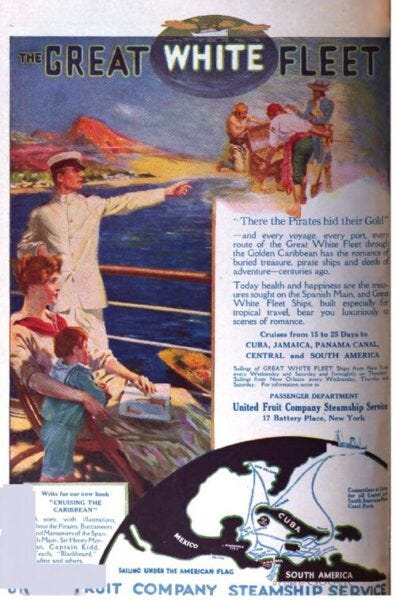
Beginning in the 1920s, everything began to change. A successful young propagandist named Edward Bernays changed American advertising forever [4]. Bernays discovered that targeting people’s emotions instead of their logic caused people to flock to a product. His first experiment in this type of advertising was for the American Tobacco Company. Bernays thought that cigarette sales would sky rocket if it was socially acceptable for women to smoke, so at an important women’s rights march in New York City, Bernays had a woman light a cigarette in front of reporters and call it a “Torch of Freedom” [5]. Soon, women all over the United States were smoking cigarettes. After this initial public relations stunt, companies all over America began using emotionally-loaded advertising. United Fruit was no different. They launched an advertising campaign revolving around their new cruise liner called “The Great White Fleet” [6]. This cruise liner sailed civilians to the United Fruit-controlled countries in Central and South America to appeal to Americans’ sense of adventure and foster a good corporate reputation with the American people. When the cruise liner docked in a country, cruisers often toured one of United Fruit’s plantations. During this tour, the tourists would only be shown small areas of the banana plantations, theatrically set up to present the plantation as a harmonious place to work, when, in reality, it was a place of harsh conditions and corruption [7]. Their advertisements were key in swaying the American people to set out on an exotic adventure with the Great White Fleet. The flyer to the right (Fig. 1) describes Central America as a land of pirates and romance. The advertisement even portrays it as the place where “Pirates hid their Gold.” By giving the American tourists a false sense of the romanticism of Central America, they sold more cruise tickets, and through association, more bananas.

United Fruit’s unethical practices extended far beyond their manipulative advertising. They were also well known for their extremely racial politics in the workplace. They had employees from many different racial groups, and they would pit them against one another to control revolts that would otherwise be aimed at the company [8]. American whites would get the most prestigious jobs, like managers and financial advisers, while people of color got the hard labor. The company made a rigid distinction between Hispanics and West Indian workers. They administered different privileges and punishments to each ethnic group , and if one group were rewarded, the managers told them it was because they worked harder than the other group. If a punishment was administered, management would say it was the other group’s fault [9]. This gave the two groups something to focus their anger on, so they didn’t revolt against the company due to poor working conditions. United Fruit used the Great White Fleet to further these racial tensions. If the name was not obvious enough, all the ships were painted bright white and all the crew members wore pristine white uniforms [10]. The Fleet went so far as to encourage the passengers to wear white. The advertisement to the left (Fig. 2) further embodies the racial tensions experienced by the Americans and the United Fruit laborers. The large, white, American ship dwarfed the small, run-down, brown ship, symbolizing the power and prestige the whites had over the locals. The Central Americans in the corner of the picture are looking in awe of the massive ship, and are dressed in tropical garb to satisfy the need to appeal to the American people’s idealized version of the tropics. This is not only an advertisement, but a work of propaganda.

The United Fruit Company continued to advertise throughout the mid twentieth century until they found a new use for their public relations skills. A politician named Jacobo Arbenz was elected president in Guatemala, one of the Central American countries occupied by United Fruit [11]. Arbenz was a strict nationalist, and all he wanted was for his people to stop suffering in poverty. One of the most prominent issues in Guatemala, at the time, was scarcity of land. When United Fruit invaded Guatemala, they bought out many of the local farmers to acquire land for their plantations. This did not leave room for the peasants, who relied on farming as the sole source of their income. Arbenz created an agrarian reform that took land from the company and gave it back to the poor farmers that needed it [12]. United Fruit was outraged by this reform. They immediately launched a propaganda campaign led by Edward Bernays to convince the United States government and its people that Arbenz was a communist dictator [13]. In a 1953 article by the New York Times, Guatemala was described as “operating under increasingly severe Communist-inspired pressure to rid the country of United States companies” [14]. United Fruit was manipulating the media to make it sound like the agrarian reform was only created because Arbenz was being influenced by the Soviet government to sabotage America’s economic imperialism in Central America. Since it was during the Cold War, association with communists was a serious accusation. The United States’ aggressive stance toward communism encouraged them to take immediate action. The CIA hired civilian militias from Honduras to come into Guatemala and start a war against Arbenz and his followers. United Fruit also convinced U.S. President Dwight Eisenhower to threaten Arbenz because Eisenhower and many other prominent American government officials had stock in United Fruit [15]. With these pressures, Arbenz feared for his life and submitted his resignation.
However, this did not satisfy United Fruit. They wished to make an example of Guatamala, so their other host nations wouldn’t dare oppose them. They had the CIA pay off the Guatemalan military so they would let the Honduras militia win [16]. After the victory, the leader of the Honduran militia, Castillo Armas, was appointed as president of Guatemala and Armas was a puppet of United Fruit Company for the rest of his term [17]. He returned all of United Fruit’s confiscated land, and gave them preferential treatment in all Guatemalan ports and railways. The company continued to influence the media of North and Central America to justify what they had done. They called Armas the “Liberator” and told the inspiring tale of how he freed Guatemala from its communist ties. They also destroyed what was left of Arbez’s reputation by calling him “Red Jacobo,” further tying him to the Soviets [18]. A New York Times article written in 1954 states that, “President Castillo Armas is continuing to act with moderation and common sense,” and “Jacobo Arbenz, anyway, is a deflated balloon, hardly likely to cause any more trouble” [19]. The media praised Armas for his good policy making, yet most of his policies were proposed by United Fruit or the American government. United Fruit and American controlled media also made Armas into a war hero to increase his acceptance and popularity with the Guatemalan people. Arbenz was made to look like an easy defeat to give the American people confidence in the ability of their government to eliminate communist threats.
*****
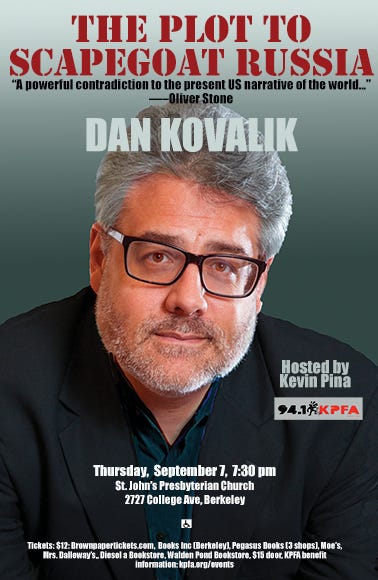
Back on track with Dan and Haeder. And so we discussed the genocide, the mass murder, the shifting baseline of acceptance, and how Israel and their Jewish Project for a Greater Tyrannical Israel has set down a new set of abnormalities in the aspect of guys like Dan and Jeremy having to bear witness, research the roots of these tyrannical empire building plots, and then write about it and publish books, which for all intents and purposes might be read by the choir.
Again, Dan lost his faculty job at the University of Pittsburg, why?
Russia. Putin Stoogery.
Dan and I talked off the mic about adjunct faculty organizing: He was interviewed 13 years ago on that accord: Interview with an Adjunct Organizer: “People Are Tired of the Hypocrisy”
The debate over the working conditions for adjunct faculty was recently reignited by the death of Margaret Mary Vojtko, a longtime adjunct professor at Duquesne University who was fired in the last year of her life and died penniless. Moshe Marvit talks to Dan Kovalik, a labor lawyer who knew Votjko and has helped to publicize her story.

The debate over working conditions for adjunct faculty was recently reignited by the death of Margaret Mary Vojtko on September 1. Vojtko, who had a long career as an adjunct professor at Duquesne University in Pittsburgh, Pennsylvania, died penniless after being fired from the university in the last year of her life. Her story served as a reminder of what has become a massive underclass of underpaid contingent labor in academia.
Dan Kovalik, senior associate general counsel of the United Steelworkers, wrote an article in the Pittsburgh Post-Gazette that brought news of Votjko’s death to a wider audience. Kovalik has been working with Duquesne adjunct faculty for several years, helping them organize a union and fight for better working conditions. At the time of Votjko’s death, he was assisting her in a legal fight to keep her job and her independence. I spoke with Kovalik in his office in the United Steelworkers building in Pittsburgh. The interview has been edited for clarity.
Moshe Marvit: Can you describe the working conditions of adjunct faculty?
Dan Kovalik: As I’ve come to learn, and I didn’t realize it until about a year and a half ago when adjuncts approached us to organize, the conditions are just abysmal. The folks that came to me at that time were making $3,000 for a three-credit course. So say you teach a load of two courses a semester, and you have two semesters a year, then that’s $12,000 right there. No benefits. Maybe you get a summer course in there, so maybe you make $15,000 per year. That’s barely enough to live on, especially if you have a family. I know a guy who teaches seven courses per semester to make ends meet at three different universities. They call it a “milk run.”
It had always been my perception that going into the academy would be a great life. You would get a good salary; you would get benefits; you would get the benefit where your kids could go to school for free there or at a reduced rate. Adjuncts don’t get that. I’ve come to learn that 75 percent of all faculty around the country are adjuncts. It’s this kind of dirty secret of the academy.
Meanwhile there are just a few at the top who are doing well. It looks a lot more like the corporate world than like nonprofit education. — DK
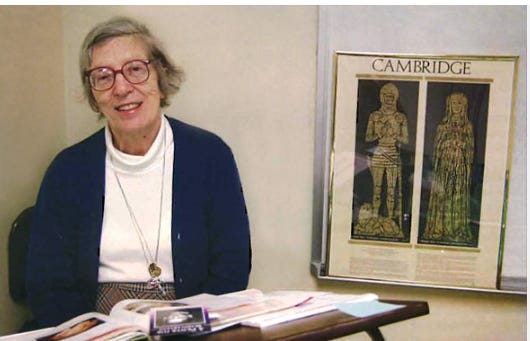
I knew about Mary before her firing and her death, and alas, Dan and I are brothers in arms when it comes to freeway fliers, just-in-time adjunct faculty, precarious teachers, 11th hour appointed non-tenure track and non-contracted instructors.
*****

Get the book, ASAP. Preorder at Baraka Books here.

I will use one chapter from their book, about a person Dan met in Syria, who is a journalist and is emblematic of the power of being Syrian, and in fact, Dan stated that the best and friendliest folk in the world are Syrians, and Lebanese and Palestinian. My experience that the Diaspora of those same folk for me absolutely resonates the same over my 6.6 decades. He dedicated the book to Yara:

In 2021, I twice visited both Lebanon and Syria. What I learned there was quite at variance with what we were being told in the mainstream press. One of the first people I met in Damascus, Syria, was Yara Saleh, a lovely and affable woman who was serving as a reporter and anchor for the Syrian News Channel, an official state news agency.
Yara, while working for this channel back in 2012, was kidnapped by the Free Syria Army (FSA) just outside Damascus, and held for six days until rescued in a daring mission by the Syrian Arab Armed Forces (SAA). Yara’s kidnapping and rescue became the subject of a movie which the delegation I was with were invited to watch for its premier. I contacted Yara afterwards to hear her story in her words.
Yara still seemed shaken by her abduction years before. She was thin, almost to the point of emaciation, ate nothing, but chain smoked as she told her story. As Yara explained, she was traveling with a driver (Hussam Imad), a camera man (Abdullah Tabreh) and an assistant (Hatem Abu Yehya) to do a report on the clashes between the SAA and forces which she described as “armed terrorist groups.” She specifically wanted to report on the impact of the burgeoning war and terrorist threats upon the civilian population.
However, while traveling on the road to their destination (a Damascus suburb known as al-Tell), they were stopped by armed men. These armed men detained them, took their possessions, including their phones and money, and beat all of them, including Yara. Yara, a quite small woman, explains that the beatings upon her were quite hurtful. Yara said they decided to kidnap them after discovering that they were with the Syrian News Channel.
They were driven into town and to a location with hundreds of other armed militants. While en route, one of the armed captors held Yara’s head down between her legs.
One of the first questions Yara and her colleagues were asked was about their religious background. All of them were of “mixed” traditions in Yara’s words, and Yara stood out because she wore makeup and did not wear any head covering. I just found out recently that Yara is an Alawite. Yara, like many of her fellow Syrians, sees herself as a Syrian first and that is more important to her identity than being an Alawite. Before the sectarian violence brought to Syria from the outside, Syrians did not wear their religions on their sleeve and didn’t go around asking others what their religion is; that would be considered rude.
The sheikh told them that they all were to be executed because they worked with the Syrian government and because of their mixed religious affiliations. In response to the sheikh’s words, two of Yara’s colleagues, Hussam and Hatem, were taken away to a nearby location. Yara then heard the sound of gun fire. She believed that both of her associates were killed at that time. However, Hussam was shortly brought back, and he told Yara, with tears in his eyes, that he witnessed Hatem murdered in a spray of bullets.
Notably, Yara explained that the fighters who held them openly told them that they were taking orders from someone in Turkey and that they had been told to move them to Turkey. The fighters explained that the plan was to negotiate their freedom with the Syrian Arab Army, and that if the SAA did not give in to their demands, they would kill them. However, when Yara asked one of the fighters if they would be released if the SAA gave them what they wanted, he answered in the negative, saying that they would continue to hold them for leverage to gain more concessions.
In addition, according to Yara, a significant number of the fighters were not Syrian. They were not certain where they all were from, but they could tell by their accents that some were from Saudi Arabia and Libya. (from the unpublished manuscript, Syria: An Anatomy of Regime Change.)
*****

Listen to the interview I had with Dan. He fielded my more unconventional questions, with an open mind and grace and in the end this radio interview is an organic discussion, or in Dan the Lawyer’s words, “I have no problem with stream of consciousness.”
The post The Playbook for America: We Thought We Saw it All with Freedom Torches and Edward Bernays Fomenting Regime Change in Guatemala, Chile first appeared on Dissident Voice.
This content originally appeared on Dissident Voice and was authored by Paul Haeder.